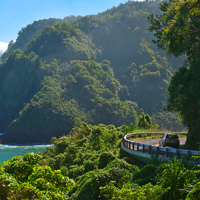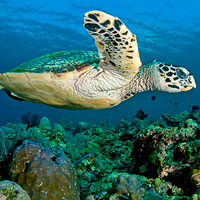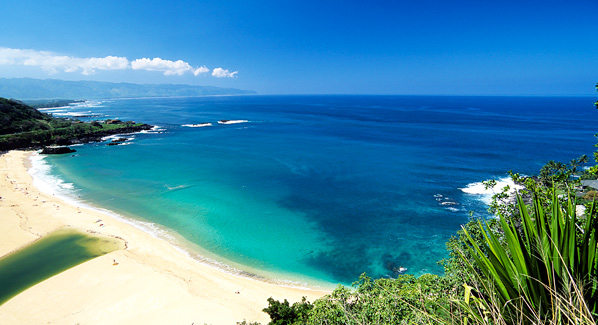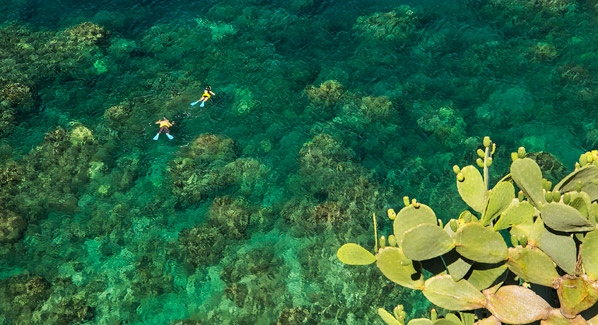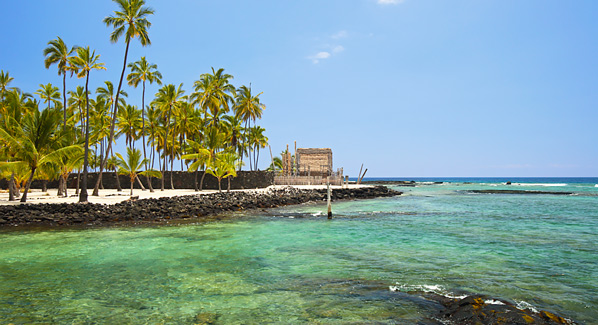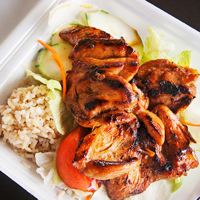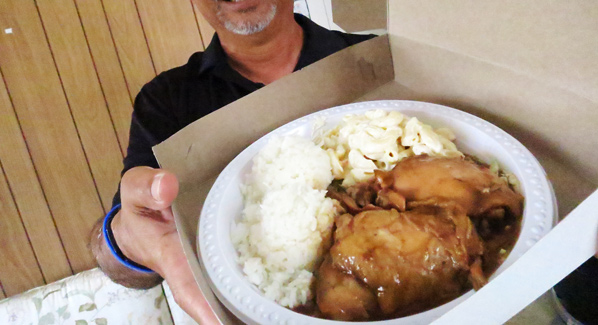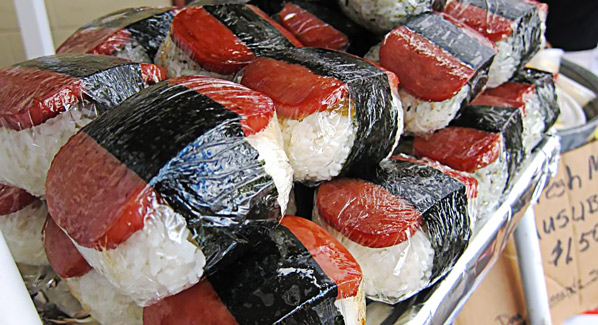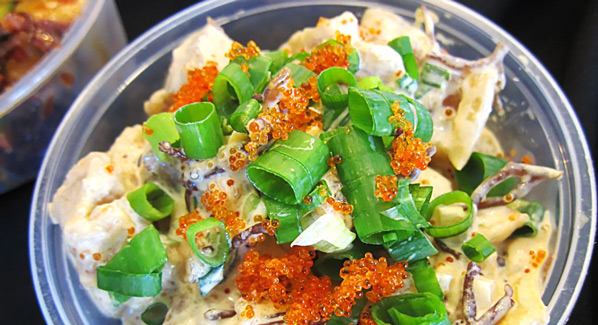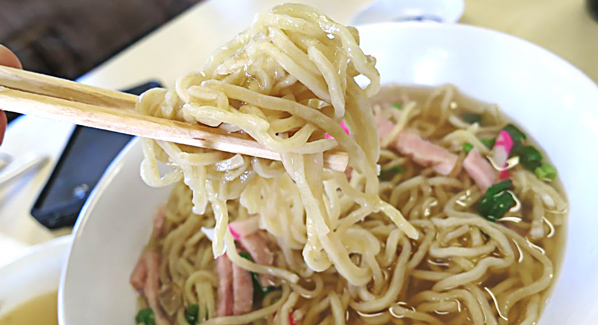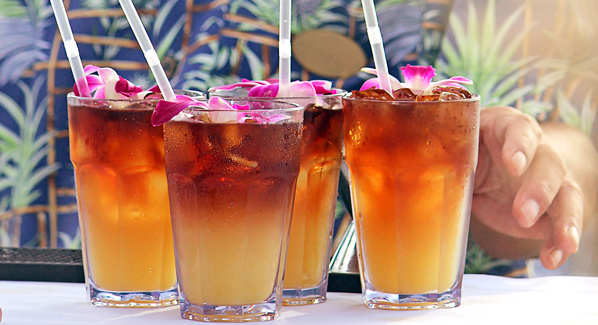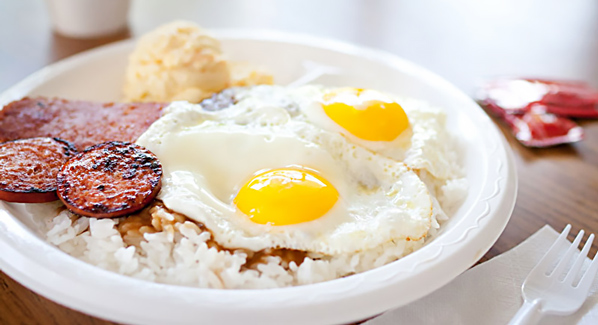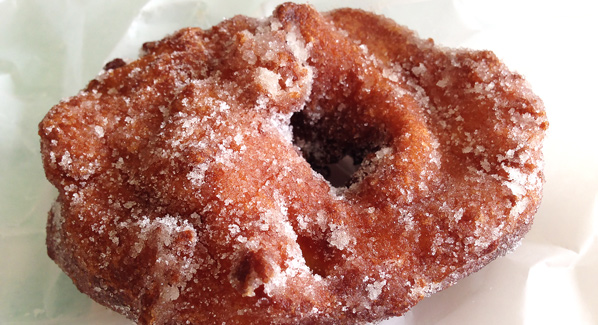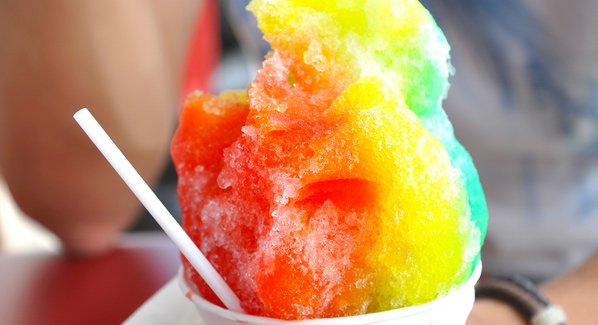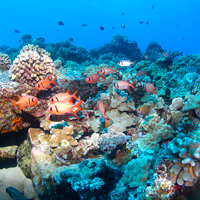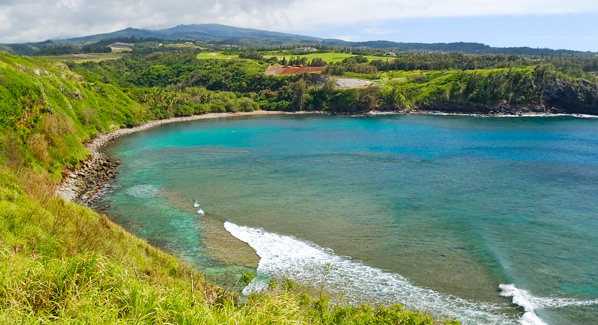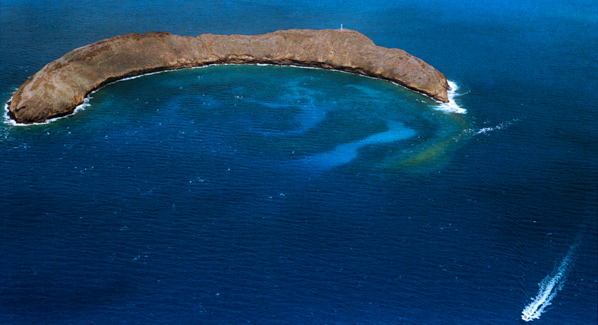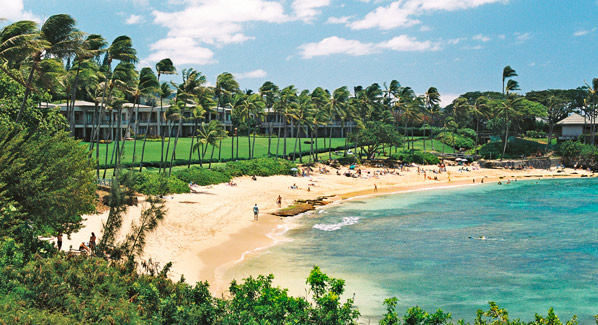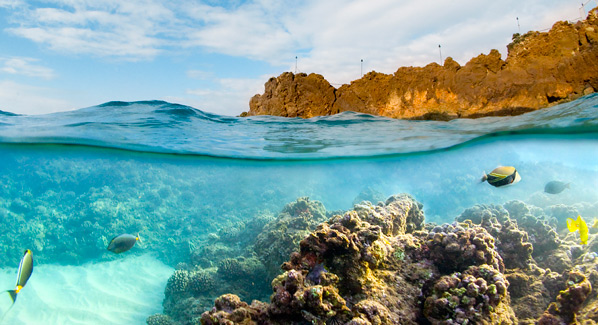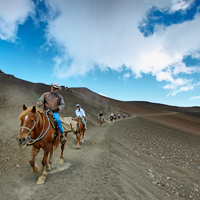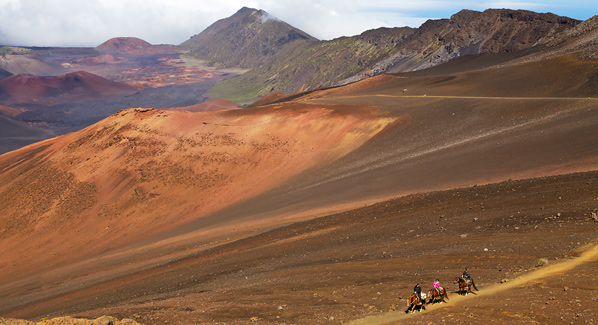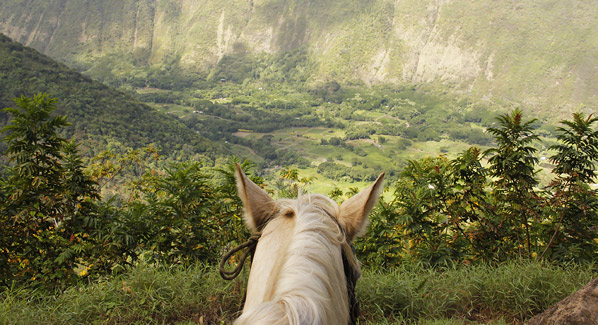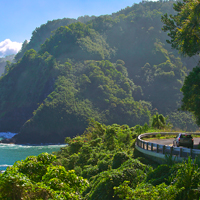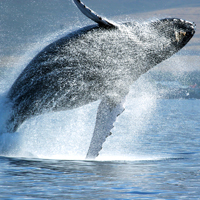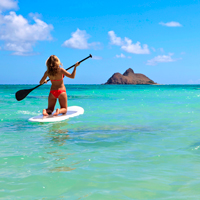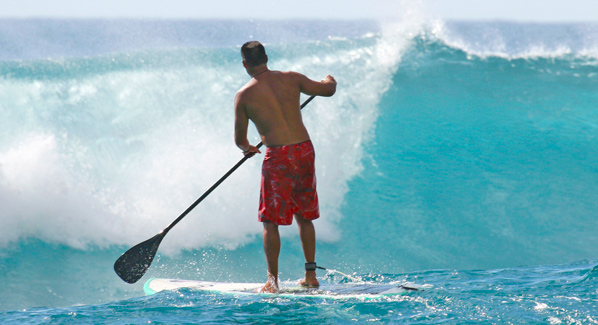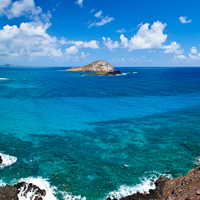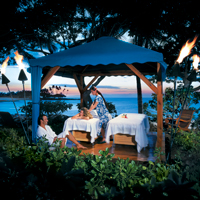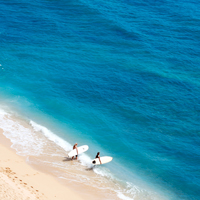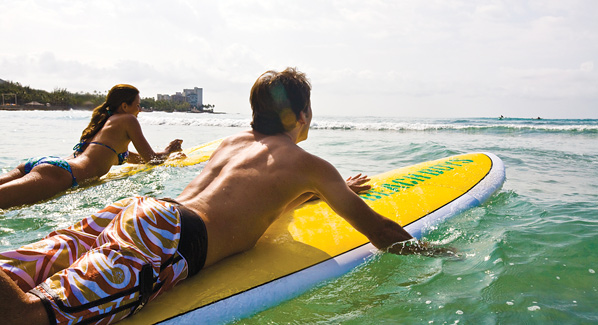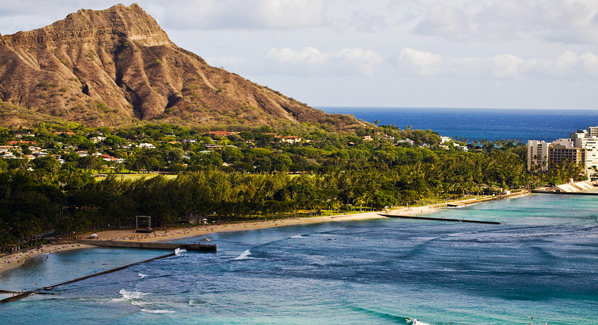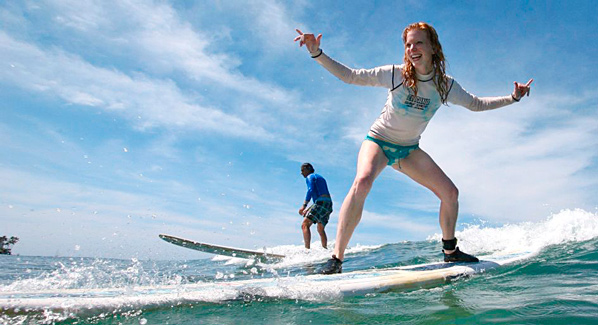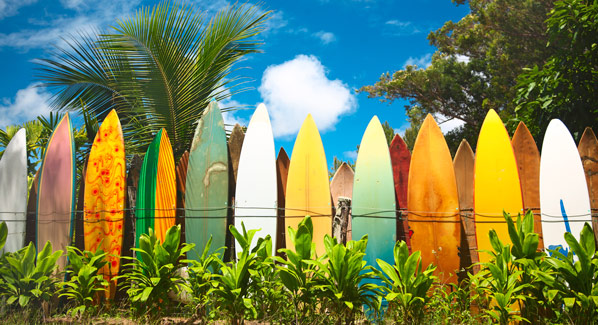A visit to a spa in Hawaii is somewhat different from a stateside pampering. In the islands the experience goes tropical with pineapple, coconut and lime fragrances and earthy with volcanic mud and lava rocks playing a role in your treatment. The islands’ big-name resorts go all out in creating not only fantastic treatments you won’t find back on the mainland, but the perfect surroundings that only a tropical Hawaiian island can provide. So if it’s time to detoxify, relax, get healthy or just spoil yourself, these resort spas are so worth a visit.
Fairmont Orchid, Kohala Coast, Big Island of Hawaii
Pampering in the Hawaiian Islands means connecting with nature and being outdoors where water, wind and the fragrance of the island create a relaxing environment for a spa treatment. At the Fairmont Orchid resort the spa is actually called, the Spa Without Walls, which makes perfect sense. Guest treatment rooms include outdoor huts near waterfalls and oceanfront cabanas where the soothing sounds of water mix with ocean breezes. In this setting, it’s only appropriate to indulge in a lomi lomi massage, one of the most traditional Hawaiian massages. It was used in ancient Hawaii by native healers. Therapists move their forearms and hands in long gliding, rhythmic movements and use medium pressure to relax muscles. They work gently, yet deeply into the tissue, and the continuous flowing strokes, combined with loving touch, ease muscle tension so internal energy can better flow.
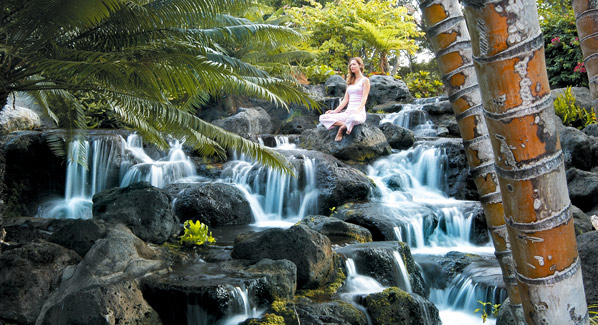
The Fairmont Orchid resort’s Spa Without Walls takes advantage of the Big Island of Hawaii’s waterfalls to create areas for reflection and relaxation. Photo: The Fairmont Orchid, Hawaii
The Kohala Coast is known for its high-end resorts, and the Fairmont Orchid is right up there with the top properties. Its grounds can rightly boast some of Hawaii’s most impressive tropical gardens and cascading waterfalls, plus a white sandy beach on Pauoa Bay. Rooms have lanais with views of the Pacific Ocean or the lush gardens, and the bamboo- style four-poster beds bring the tropical theme inside. Thatched umbrellas and a tiki bar make the alfresco Hale Kai restaurant an inviting spot for lunch or dinner.
Mauna Lani Bay Hotel & Bungalow, Kohala Coast, Big Island of Hawaii
A trip to the spa at the Mauna Lani Bay Hotel is like a visit to a Hawaiian village. Thatched-roof huts for treatments and meditation are surrounded by jungle-like foliage and dramatic rocks. Natural lava saunas and a Watsu pool are part of the spa too. The names of the treatments alone are tantalizing: Papaya Pineapple Body Treatment, Kona Mocha Body Scrub, Seaweed Therapy and Lava Flow Body Wrap. If you want to detoxify from all the work-related stress you left behind or too many libations the night before, the Lava Flow Body Wrap is for you. Therapists apply volcanic mud and then wrap your body; the results are smoother skin and the remineralizing of your body. The Lava Watsu Experience is pure stress relief. In the comfort of a pool, where the water is the perfect temperature for your body, a therapist helps you to relax through flotation and rhythmical movements said to relieve pain and promote flexibility.
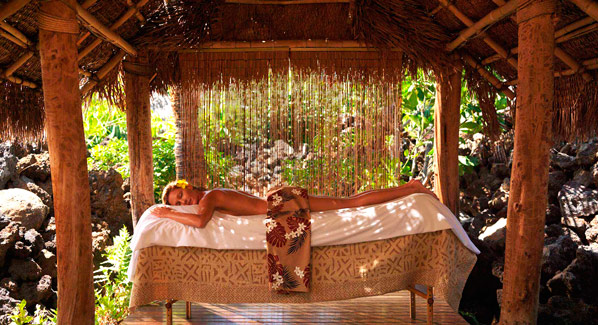
Tropical foliage and thatched roofs create a Hawaiian village ambience for spa-goers at the Mauna Lani Bay Hotel on the Big Island of Hawaii. Photo: Mauna Lani Bay Hotel
Considered one of the Big Island’s most romantic resorts, you’ll be dazzled by its open-air lobby with cathedral ceilings. Koi ponds and illuminated sheets of water add to the decor. Guest rooms have a minimalist decor with graphic orchid artwork and great views of the Mauna Kea Mountain. If you want to splurge, the property’s bungalows at 2,700 square feet of living space are perfect for a long vacation. They have private pools, Jacuzzis and barbecue areas. If you need a reason to extend your stay, we’ll give you one: golf. With two courses that blend mountain and ocean and the Keiki Course for youngsters, one day of golf won’t be enough.
Grand Wailea, Maui
This Waldorf Astoria resort has bragging rights to the largest spa in Hawaii. Its two-story Spa Grande covers 50,000 square feet and devotes one floor to dry treatments and the other floor to wet indulgences. In fact the spa is known for its Terme Wailea Hydrotherapy. Enjoyed prior to a treatment, the water therapy can include time spent in a Roman whirlpool tub followed by a quick dip in a cold plunge pool, or guests can opt to soak in the hot water of a Japanese furo bath. Another option is the cascading waterfall massage designed especially to knead the neck and shoulders with the pressure of water dropping from a height of 10 feet. The hydrotherapy also includes five Hawaiian sea salt baths and an invigorating loofah scrub. The spa organizes treatments by philosophies: water, fire, earth, air and harmony. Fire, for example, involves heat to warm the body, and the Pohaku massage, using hot lava stones, is said to be one of the most therapeutic.
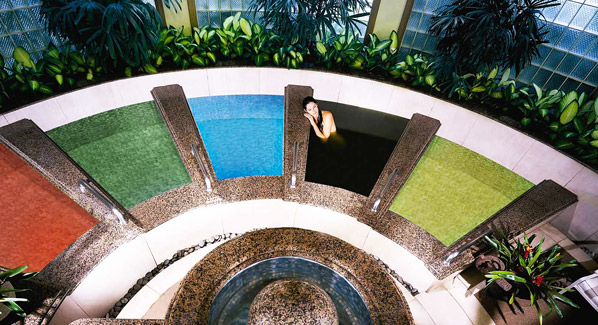
The termé in the Spa Grande at Maui’s Grand Wailea resort lets guests choose their specialty bath: mud, seaweed, aromatherapy, papaya and mineral salt. Photo: Grand Wailea, A Waldorf Astoria Resort
The resort, set on 40 acres fronting the Wailea Beach on the southwest shore of Maui, is all about giving you plenty of space, whether it’s a 640-foot room or a huge pool with a swim-in grotto and 19-foot waterfall. There’s also the swim-up Grotto Bar. But guests’ favorite place, no doubt, is a table at the floating seafood restaurant, named after Hawaii’s official state fish, affectionately known as Humu Humu. Its cluster of thatched-roof Polynesian huts and the chance to pluck your own lobster from the nearby lagoon are reasons to go.
Sheraton Kona Resort & Spa at Keauhou Bay, Kona, Big Island of Hawaii
After you’ve learned how to make a lei, play the ukulele and dance the hula, you’ll find more Hawaiian-centric things to explore at the resort’s Hoola Spa. The word hoola means to heal, and treatments here range from pure bliss to therapeutic. The Hawaiian Sugar Polish Body Treatment for sensitive skin uses Hawaiian sugar crystals and botanicals to gently scrub the body followed by a Vichy rinse. The Hawaiian Lomi Lomi Massage is the islands’ version of a Swedish massage, using techniques handed down through generations. The long, gliding strokes and gentle rhythmic motions make this a popular choice. The Hoola Spa also offers a Deep Lomi Lomi Massage for guests who want a firmer, more intense experience. The newest offering at the spa is the Himalayan Salt Spa, a room where guests inhale very fine micro- particles of salt that are said to have anti-inflammatory properties that reduce inflammation in the respiratory tract and improve the immune system.
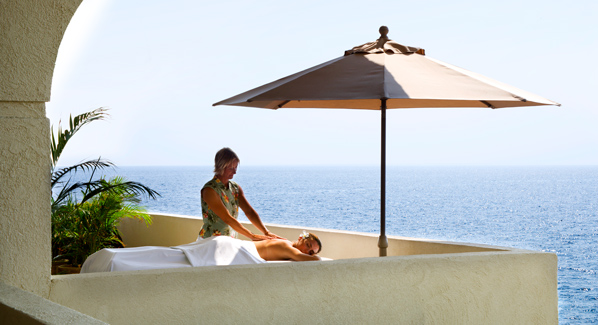
Guests enjoy the warmth of the sun and the coolness of ocean breezes during a massage at the Hoola Spa in the Sheraton Kona Resort on the Big Island of Hawaii. Photo: Sheraton Kona Resort
The Sheraton Kona Resort is perched on the edge of Hawaii’s iconic lava rocks, hugging Keauhou Bay. Although the rooms are stunning with warm wood tones and crisp white linens, you’ll no doubt want to spend your days in the pool area, where a 200-foot lava tube waterslide, hot tubs and a striking view of the water and crenulated coast teases the eye. A bonus is the resort’s special viewing area where guests can see the hauntingly beautiful manta rays, with wing spans up to 20 feet, glide by most evenings.
Trump Hotel Waikiki, Oahu
At this Trump International hotel in Honolulu, the Spa at Trump pumps up its offerings to include treatments that use traditional Hawaiian botanicals. Think pineapple, lime, coconut and sugar. What could sound more appealing to the senses than the Hawaiian Pineapple Lime Exfoliation Massage? Pineapple has natural exfoliating enzymes and nutrients to renew and revitalize the skin. The exotic combination of pineapple, lime and cane sugar in the hands of a therapist are used to gently cleanse, refresh and rehydrate your skin, before the body massage. The final touch is the application of tropical oils to conclude your hour of bliss. Another Hawaiian-centric treatment is the Kalo Coconut Wrap. Therapists use coconut and the healing kukui nut oil to condition the skin. And while you are wrapped and relaxed, your feet and scalp are massaged, leaving you with a head-to-toe pampering.
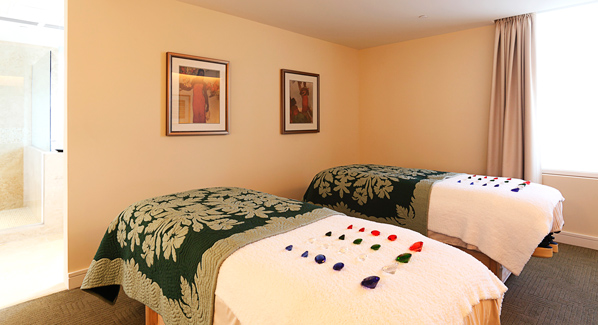
Among the signature treatments at the Spa at Trump in the Trump Hotel Waikiki is the gemstone massage, using gem-infused oils that contain diamonds, rubies, emeralds and sapphires. Photo: Trump International Waikiki
After a visit to the spa, relax at the hotel’s infinity pool, where a watery view of the Pacific Ocean will keep you feeling totally de-stressed. Accommodations at the Trump Hotel include studios with kitchenettes and suites with full kitchens that spoil guests with their Bosch, Sub-Zero and Wolf appliances. And for the nights you want to dine out, BLT Steak is the top on-property restaurant where a French flair and a contemporary décor give this steakhouse its upscale appeal.
The Kahala Hotel & Resort, Honolulu, Oahu
With a guest roster that includes presidents, royalty and celebrities, the Kahala Hotel & Resort is known for its high standards, and the spa is no different. The Kahala Spa’s treatment rooms are anything but tiny, and include a relaxation area with comfy rattan chairs, a glass-enclosed shower, a soaking tub and a changing area that provides privacy. Wood flooring and slat-style windows add warmth to the room, which opens onto an outdoor area. Each treatment begins with the ritual of Hoomaka, a cleansing and relaxing foot massage. For the ultimate experience, book the Lovely Hula Hands Massage, a four-handed dancing of hands using the lomi lomi massage techniques. Two therapists work in rhythm with each other to ease you into a state of total relaxation.
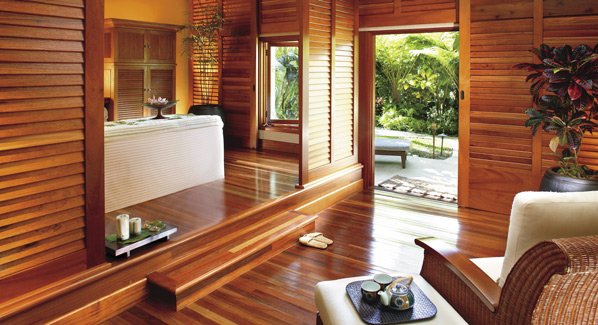
Honolulu’s Kahala Hotel & Resort’s spa suites include private indoor and outdoor relaxation areas for lounging after a treatment. Photo: The Kahala Hotel & Resort
You can follow up your treatment with a leisurely stroll on the resort’s palm tree-fringed shore or by lolling in a hammock. Your room’s lanai is another great perch where you can relax while gazing at the Koolau Mountains. Rooms are airy with a palette of light natural tones and island touches, such as tropical leaf shapes etched into the carpeting, and the luxe bathrooms have deep soaking tubs. Located just minutes from shopping and nightlife, the resort’s complimentary shuttle will whisk you into Waikiki.


